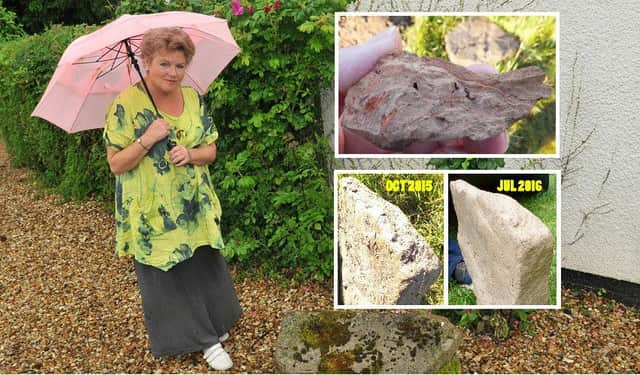New report does '˜not rule out' ancient cathedral at Louth site


A large piece of stone from the site, which was discovered during a trenching survey last October, was assessed by Dr Kevin Hayward at the request of local campaigner, Prisca Furlong, after previous reports concluded that the site had no archeological significance.
The new report asserts that the stone is a ‘glacial erratic’ – a dense, igneous rock brought to Louth by a glacier – rather than permian limestone, as asserted in the original survey report by Lincolnshire-based company Allen Archeology.
Advertisement
Hide AdAdvertisement
Hide AdAllen Archeology’s report stated that “no archaeologically significant features or deposits” had been identified in any of the trenches, but Prisca appealed for further investigation to take place – saying that the site could have been the home of the ancient Anglo-Saxon Sidnacester Cathedral, which has been lost and sought in Lincolnshire for over 1,000 years.
A piece of Roman brick found near the stone was deemed significant by Dr Hayward, with his report stating that the stone’s “association ... with Roman brick as probably of local manufacture can be seen in the foundations of many Anglo-Saxon churches”.
The report conceded that this cannot be confirmed from the block alone, as there were no traces of ‘relict mortar’ on the stone which, according to Prisca, appears to have been cleaned since the original survey took place last October.
The long-running dispute into the possible significance of the site played a part in the rejection of a 12-home planning application in April, with councillors saying that the heritage value of the land needed to be assessed ahead of any future developments.
Advertisement
Hide AdAdvertisement
Hide AdPrisca is now starting to raise money towards community-led archeological exploration, including funds raised through the sales of her upcoming book on the topic.
She believes that the site is “woefully under-discovered”, and added: “It would be of huge benefit to Louth to explore this heritage and open up the whole area as a heritage region for cultural, educational and commercial benefit.”
Anyone interested in raising funds towards this can email [email protected].
Meanwhile, Allen Archeology have stood by their original report on the Julian Bower site.
Advertisement
Hide AdAdvertisement
Hide AdDirector Chris Clay told the Leader: “The work we carried out on this site was completed to the highest professional standards, and to a method statement approved by Lincolnshire County Council’s Historic Environment Officer.
“The report on the archaeological evaluation trenching has been accepted by Lincolnshire County Council and East Lindsey District Council, and has also been reviewed and approved by Historic England.”
“As far as this company is concerned, at present there is no further archaeological requirement for this site, and this brings our involvement in the scheme to a close.”